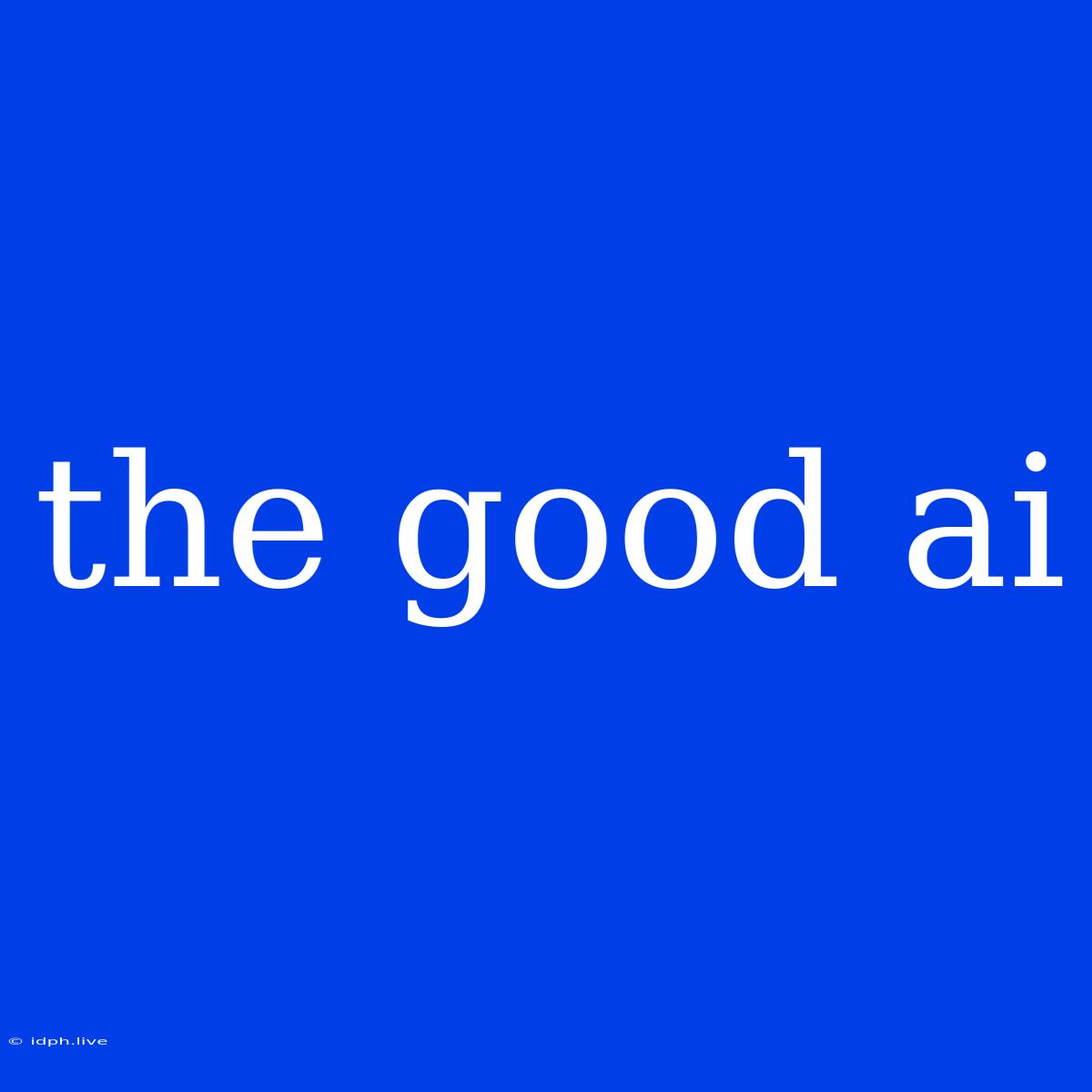The Good AI: Exploring the Potential of Artificial Intelligence for Good
Artificial intelligence (AI) is rapidly changing the world, from automating tasks to driving innovation in various industries. While there are concerns about the potential risks of AI, it's crucial to acknowledge its potential for good. The Good AI refers to the use of AI technology to solve pressing global challenges and improve the lives of people around the world.
The Power of AI for Good
AI has the potential to revolutionize how we address crucial issues like:
1. Healthcare:
- Early disease detection and diagnosis: AI algorithms can analyze medical images, predict potential health risks, and assist in early detection of diseases like cancer.
- Personalized treatment plans: AI can create personalized treatment plans based on individual patient data, leading to more effective therapies.
- Drug discovery and development: AI can accelerate the process of drug discovery by analyzing vast amounts of data and identifying potential drug candidates.
2. Education:
- Personalized learning experiences: AI-powered platforms can adapt to individual learning styles and pace, providing personalized education and support.
- Accessible education for all: AI can bridge the gap in access to quality education by providing learning resources and tools in remote areas.
- Automated grading and feedback: AI can automate the grading process, freeing up teachers to focus on providing individual guidance and support.
3. Environmental Sustainability:
- Climate change mitigation: AI can help analyze climate data, predict weather patterns, and optimize energy consumption for a greener future.
- Sustainable agriculture: AI can improve crop yields, optimize resource usage, and minimize environmental impact in agriculture.
- Pollution monitoring and reduction: AI-powered sensors can monitor air and water quality, identify pollution sources, and help implement solutions.
4. Humanitarian Aid and Disaster Relief:
- Disaster prediction and response: AI can help predict natural disasters and optimize response efforts for faster relief.
- Humanitarian aid distribution: AI can analyze data and identify the most vulnerable populations, ensuring efficient and effective distribution of aid.
- Search and rescue operations: AI-powered drones and robots can assist in search and rescue operations in disaster areas.
Challenges and Considerations
Despite its potential, the development and deployment of The Good AI also present several challenges:
- Data Bias: AI algorithms are trained on data, and biases present in the data can perpetuate existing inequalities. It's crucial to address data biases to ensure fairness and ethical use of AI.
- Transparency and Explainability: AI models can be complex and difficult to understand. Transparency and explainability are crucial for building trust and accountability in AI systems.
- Job Displacement: Automation powered by AI can displace certain jobs. It's important to prepare for these changes and ensure that everyone benefits from the AI revolution.
Towards a Better Future with The Good AI
The Good AI holds enormous potential to address global challenges and create a better future for everyone. By addressing the challenges and ensuring responsible development and deployment, we can harness the power of AI for positive change.
The journey towards a future powered by The Good AI is a collaborative effort that requires engagement from governments, researchers, businesses, and individuals. By working together, we can ensure that AI is used for good, creating a world where technology serves humanity.

